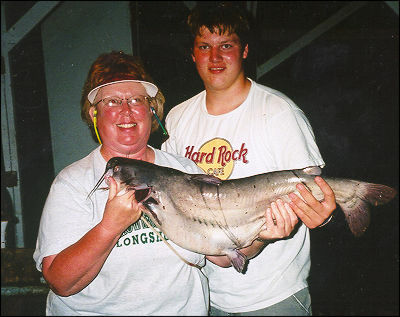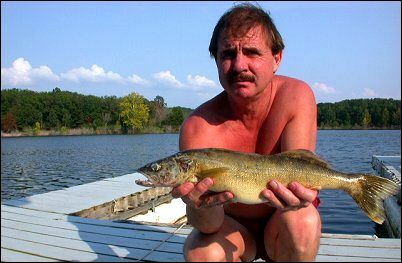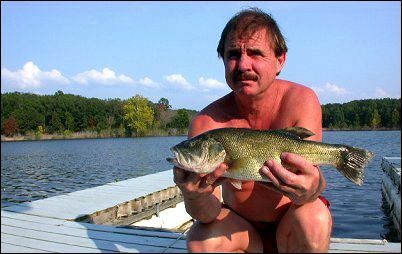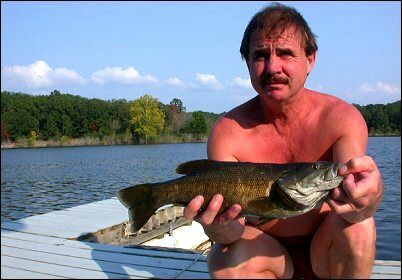Crawfish are a favorite food for all three species, making crankbaits highly effective. On windy days, switch to spinnerbaits; when it’s calm, flukes work best. Night fishing in midsummer is productive with blacklights and fluorescent lines after dark, while green grubs perform well in winter. Superflukes are a versatile, year-round option. Spooning brush piles works most of the time.
Bass (Largemouth, Smallmouth, and Kentucky)
Bass populations in Lake Norfork fluctuate yearly based on spawning success. Currently, Kentucky bass are the most abundant, followed by smallmouth and then largemouth. Fish windblown creeks and banks in general around any wood. Top-water bite starts in earnest about April 15th. For an Arkansas fishing license, call 800-364-4263.
Walleye
Walleye are quickly rising as Lake Norfork’s premier game fish. If their size and numbers continue to grow as they have in recent years, they may surpass stripers in popularity. I’ve won the annual walleye spearfishing tournament four years in a row, with my largest catch weighing in at 9 pounds. In summer, I target them with spoons, while jerkbaits, soft plastics and nightcrawler harnesses are my go-to the rest of the year. Walleye prefer high, rocky banks with sharp drop-off near main lake points most of the time, migrating to flats in the spring. They sometimes suspend on shad but really like brush piles near the bottom at the thermocline.
Crappie
Crappie typically spawn in April and remain in shallow water afterward. Before the spawn, they’re found deeper, and that’s when some of the biggest crappie are caught. After spawning, target structures like submerged brush. Tube jigs and jigs tipped with minnows are the top baits for Norfork crappie. Occasionally, the largest crappie can be found along high banks with steep drop-offs during summer. Also try a live minnow on a slip flaot just above the brush. The Arkansas Game and Fish Commission mark brush piles with blue signs featuring a white fish symbol to indicate prime fishing spots. I’ve caught crappie as large as 2.5 pounds while spooning near the bottom in summer but catch the biggest ones in the winter. Scuba Steve puts in his own brush piles every year and will show you where when you get here.
Stripers & Hybrids
Stripers and hybrids often school together, with hybrids typically holding a few feet shallower. While some anglers prefer live bait like threadfin shad on balloon rigs, I lean toward artificial lures. In winter, I use green stingray grubs; spring calls for topwater lures and Bass Assassins; summer is perfect for Bink’s jigging spoons, and fall nights are ideal for stick baits. Seasonal patterns are influenced by water temperature and moon phases. Trophy stripers and hybrids are common in Lake Norfork, with early spring and late fall offering the best chances for landing a giant. Follow the shad and drop a spoon.
Catfish
Lake Norfork is home to flathead, blue, and channel catfish. Flatheads spawn later and can grow exceptionally large, while blues are the largest in Norfork. Although the blues numbers have diminished in the last few yesrs flatheads have increased. I’ve seen many over 30 pounds. A big channel cat typically tops out around 10 pounds. In spring, when water levels peak, I bait limb lines with live shiners and sunfish. During summer, I rely on trotlines and jug fishing, with crawdads being especially effective for jugs—August and September are prime months for this method. I run trotlines year-round, and there’s nothing I enjoy more than a fresh Lake Norfork catfish dinner! Check out Scuba Steve's article on how to catch Catfish on Norfork lake on www.norfork.com
Bluegill. Get some crickets and fish off Scuba Steve's Dock.




